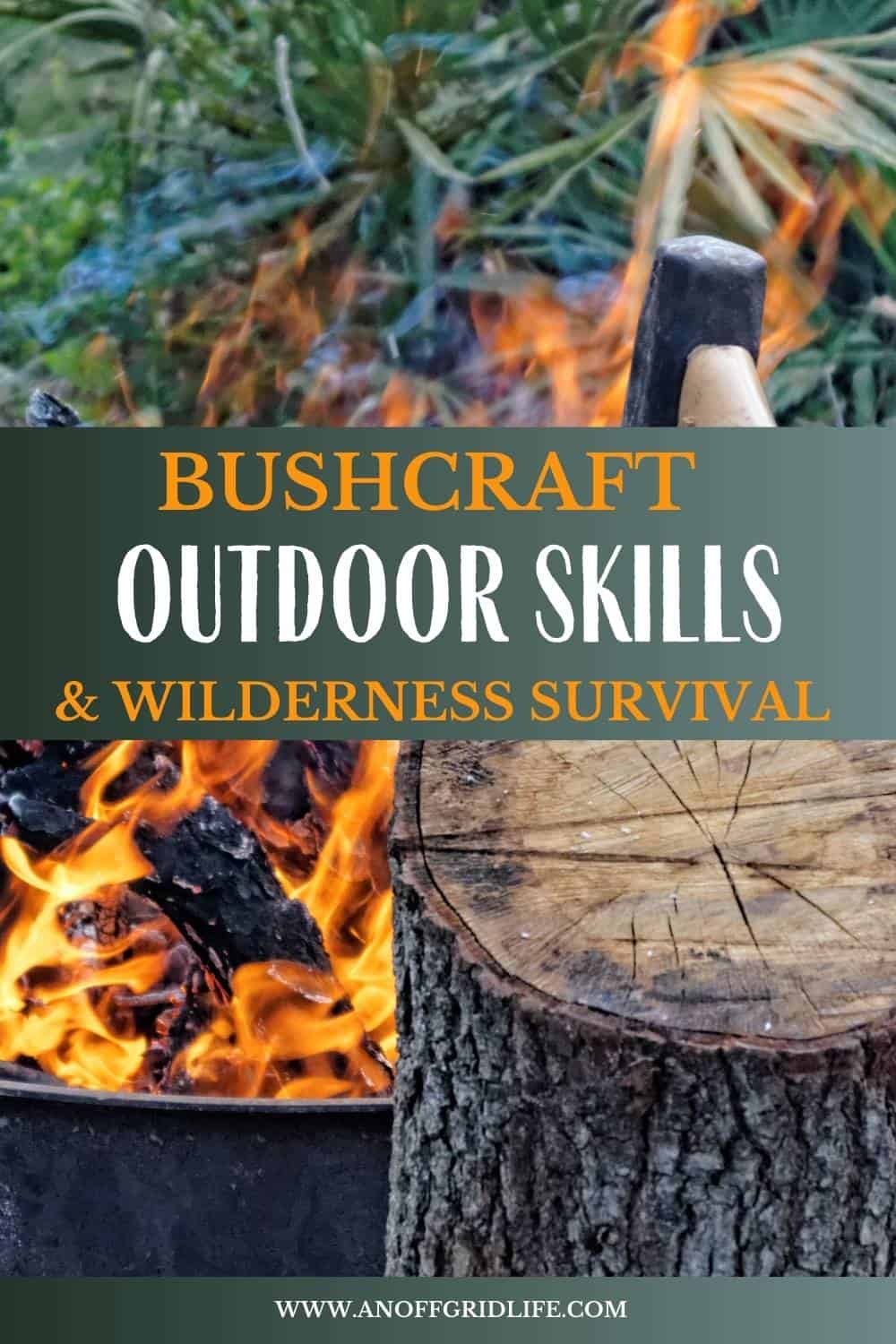Mastering bushcraft outdoor skills and wilderness survival is essential for anyone seeking to thrive and survive in the wild. You'll be more confident and better prepared when you learn the practical skills and knowledge essential for staying safe and comfortable outdoors.
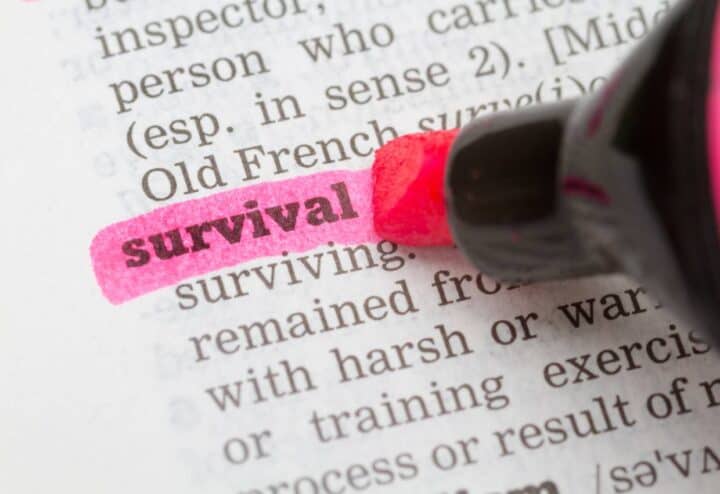
Estimated reading time: 11 minutes
Do You Have The Bushcraft Outdoor Skills and Wilderness Survival Knowledge You Need?
We've read (and written) several great articles on wilderness living skills over the years. So we know all sorts of people just like you who are interested in these skills.
Maybe you head out on the weekends with a group of backwoods adventurers. Or perhaps you teach outdoor cooking skills to youth groups in a state park or through the Boy Scouts or Girl Guides.
Whatever the case, the more prepared you are, the better.
Today I'm sharing some of the key skills to master. I'll continue to add to this list and make adjustments. So if you know of a better way of doing something, let me know.
Fire Starting Techniques
Keeping warm and cooking food outdoors means knowing how to make a fire.
Various methods exist to ignite a flame, such as waterproof matches, using a firestarter or even magnifying glasses. You can even make your firestarters to carry outdoors so you'll be ready to start a fire without matches.
Collecting Kindling
In order to build an effective fire that will last through the night, you need to know how to find and identify the best leaves, twigs, and small branches for kindling. You'll find clear instructions online or in outdoor survival books.
Creating Survival Shelters
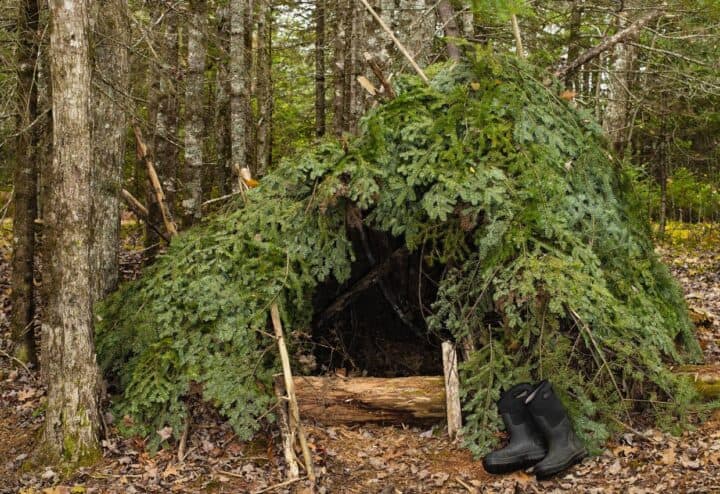
A well-built survival shelter can make all the difference during harsh weather conditions or unexpected emergencies in the wilderness. Learning to construct shelters using natural materials such as branches, leaves, snow or even mud is an invaluable skill that could save your life in dire situations.
Look through your favorite bushcraft or off grid survival books to discover different types of survival shelters and their best designs for various environments.
- Tarp Shelter: A simple tarpaulin sheet combined with some cordage can be used as an emergency shelter by suspending it between two trees or other anchor points.
- A-Frame Shelter: Using branches collected from nearby trees and foliage such as ferns or mosses for insulation purposes, create an A-frame structure that provides adequate protection against the elements.
- Quinzhee Shelter: In snowy environments, a quinzhee shelter can be built by hollowing out a pile of snow and creating an entrance tunnel to keep cold air out. Learn more about constructing these shelters in this detailed survival shelter guide.
Tying Knots
Knot tying is another essential outdoor skill that can be used in various situations, such as securing your survival shelter or attaching gear to your backpack. Mastering different types of knots will make you more versatile and resourceful during wilderness adventures. Learn the top 10 knots every outdoorsman should know.
Knot tying is another essential skill that every wilderness survival enthusiast should master. From securing your tarp shelter to setting up snares for catching game, knowing how to tie different knots will come in handy during various situations.
Some common knots include the Bowline, Clove Hitch, Square Knot, and Sheet Bend. To learn more about knot-tying techniques and their applications in outdoor scenarios, check out this article on seven essential knots you need to know.
The Gist:
Learn essential bushcraft outdoor skills for wilderness survival, including fire-starting techniques using waterproof matches or magnifying glasses, collecting dry leaves and twigs for kindling, and creating shelters from natural materials such as tarpaulin sheets or branches collected from nearby trees with foliage insulation. Tying knots like the Bowline, Clove Hitch, Square Knot and Sheet Bend is also important in securing your shelter and setting up snares to catch game.
Wild Plants Useage
Knowledge of wild plants is vital in bushcraft survival situations where resources may be scarce. Identifying edible plants like berries or roots can provide valuable nutrition while recognizing medicinal herbs could relieve ailments that might otherwise prove debilitating.
Recognizing Common Wild Edibles
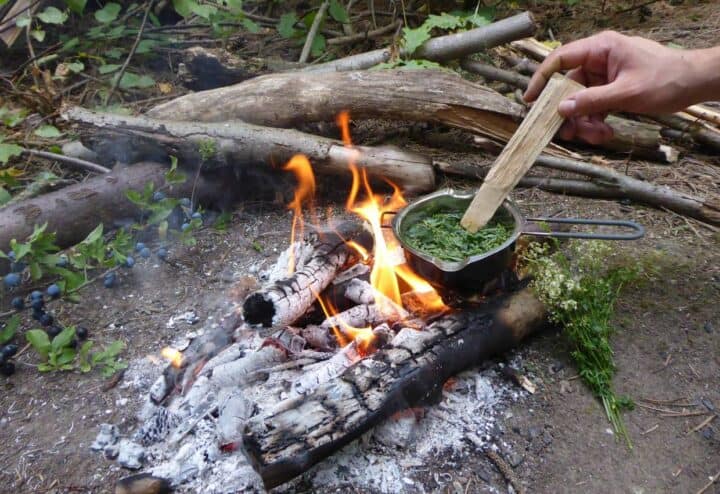
Numerous wild edibles available in the natural world can help you survive. In fact, we forage wild greens all around our home.
Some of the wild edibles we find include
- Berries: Raspberries, blackberries, blueberries, and strawberries can provide essential vitamins and minerals
- Nuts: Acorns, walnuts, hazelnuts, and pine nuts are all nutritious protein sources and healthy fats
- Tubers/Roots: Wild potatoes (not to be confused with toxic nightshade), cattail roots, Jerusalem artichokes (sunchoke), and burdock roots are underground treasures that pack plenty of carbohydrates for energy needs
- Foliage/Greens: Dandelion greens and flours, as well as chickweed leaves/stems/flowers make excellent salad ingredients packed with nutrients
Medicinal Properties of Certain Plant Species
In addition to learning to recognize wild foods, it's also a good idea to get familiar with the potential healing properties of various wild plants. A good field guide can be invaluable in identifying and understanding the uses of these plants.
The Boreal Herbal: Wild Food and Medicine Plants of the North by Beverley Gray is a great book and a comprehensive reference to add to your collection.
Container Crafting From Natural Materials
When you're in the wilderness, you need containers to carry things like food and water. And if you're in a situation where you need to survive, you might have to use your bushcraft skills to make containers from things you find in nature.
This is when your knowledge of surviving in the wilderness comes in handy. You can make useful and long-lasting containers using natural materials around you.
Birch Bark Baskets
Birch bark is an incredibly versatile material that can craft sturdy baskets for many uses.
The process involves peeling off large pieces of bark from fallen trees or branches and folding them into the needed shape. You'll need to learn traditional skills like knot tying to secure the corners using cordage made from plant fibers or roots.
Pine Needles Containers
Pine needles are a great material for making baskets that can carry important things while you're outside.
Because they are long and bendy, you can twist pine needles together tightly and keep them in place by sewing them with strong threads from nature. This method makes a basket that doesn't let water through, so it's perfect for holding things like wild plants to eat or even water.
To learn more about this ancient craft, check out this step-by-step guide on coiling pine needle baskets.
- Gather long and flexible pine needles from the forest floor.
- Coil the needles tightly while stitching them with sinew or other strong natural fibers to hold their shape.
- Create a watertight container for storing various items like wild plants or water.
Adding these bushcraft techniques into your wilderness preparedness arsenal will make you more independent and self-reliant. So next time you need a container during a backwoods hike or camping adventure, remember that nature provides all the resources necessary to create baskets.
The Gist:
You can make useful containers using natural materials found in the wilderness, such as birch bark and pine needles. With basic wilderness skills like knot tying and stitching with sinew or plant fibers, you can create sturdy baskets for holding water, food or other essential supplies.
Mental Fortitude and Personal Growth in Wilderness Survival
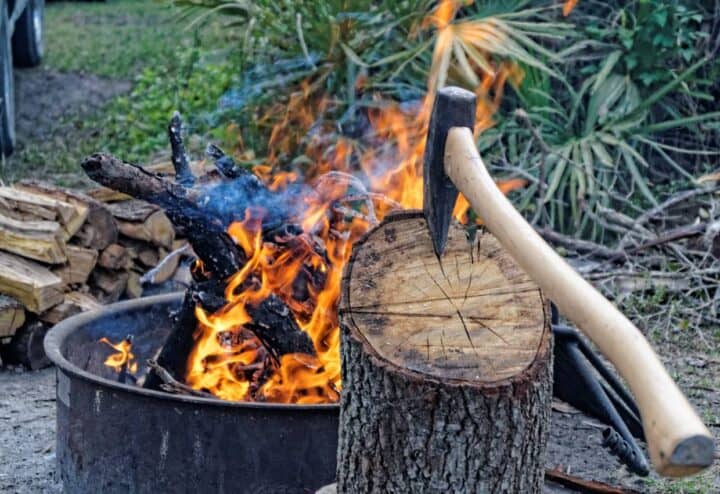
In addition to physical abilities, you need mental fortitude to thrive in challenging environments. Practicing bushcraft helps build inner qualities such as patience, perseverance, humility, observation, self-reliance and resilience. And these are all critical components of successful wilderness survival.
For example, you need time and dedication to master fire-starting techniques and shelter-building. These slow-paced activities teach you the importance of patience while working with nature's elements.
Bushcraft outdoor skills often involve overcoming obstacles presented by the natural world.
Whether dealing with unpredictable weather conditions or navigating difficult terrain, these challenges help cultivate resilience within individuals who regularly practice wilderness survival. And adjusting tactics based on the tools at hand can develop problem-solving skills and bolster self-reliance.
Other skills include:
- Persistence: Pushing yourself beyond perceived limits fosters personal growth as you learn from setbacks encountered along the way.
- Humble attitude: Recognizing that there is always more knowledge to gain from others' experiences encourages continuous learning throughout one's journey into bushcraft.
- Observation skills: Developing keen observation abilities enables you to understand your surroundings better and make informed decisions when faced with challenges in the wild.
The Gist:
Practicing bushcraft skills in wilderness survival equips individuals with essential knowledge and promotes mental fortitude and personal growth. Slow-paced activities like fire starting and shelter building teach patience while overcoming obstacles presented by nature cultivates resilience. Developing a humble attitude, keen observation abilities, and persistence fosters personal growth as you learn from setbacks encountered along the way.
The Role of Bushcraft Courses and Organizations
With the growing popularity of bushcraft courses, more people want to reconnect with their surroundings. They're ready to learn ancient survival techniques that were once commonplace among indigenous communities worldwide. Bushcraft courses not only teach valuable wilderness survival skills, but also emphasize the importance of being outdoors for mental health.
Wilderness Skills for Kids
Over the years, I've written many articles about the importance of children spending time outdoors.
Depending on where you live, you'll find outdoor activities for kids to try in all seasons.
Maybe forestschooling classes are available in your area.
Or maybe you homeschool off the grid like we do.
If so, outfit your kids with wilderness survival kits. Use foraging to teach them practical skills and science. And don't forget to include nature studies as well.
One significant benefit of involving children in outdoor activities is its potential impact on reducing symptoms associated with Attention Deficit Disorder (ADD).
Research like this study from Smith College shows that spending time in green settings can help alleviate ADD symptoms by providing a calming environment where children can focus better. Organizations like Children & Nature Network promote nature-based learning experiences for kids as an effective way to improve concentration levels.
Building Self-Confidence and Resilience
Many of the lessons included in forestchooling are also available for adults through bushcraft courses. They help foster persistence, situational awareness, focus, and self-reliance.
Bushcraft organizations provide opportunities to learn essential skills and foster personal growth in a safe environment.
Organizations like WSC Survival School specifically focus on empowering men, women and children through wilderness education programs that teach survival techniques while promoting self-confidence and resilience.
The Gist:
Bushcraft courses and organizations are gaining popularity as people seek to learn ancient survival techniques and reconnect with nature. Participants learn not only practical wilderness skills but also experience improved mental health, self-assurance, situational alertness, resilience and perseverance.
Bushcraft Skills and Wilderness Survival FAQs
How is bushcraft different from wilderness survival?
Bushcraft focuses on developing long-term living skills in the wild, such as building shelters, foraging food, and crafting tools.
On the other hand, wilderness survival emphasizes short-term techniques to stay alive during emergencies or unexpected situations.
While both involve outdoor knowledge and self-reliance, bushcraft aims at sustainable living, while wilderness survival prioritizes immediate safety.
What are the three most important things to survive in the wilderness?
The three most crucial wilderness survival elements are shelter, water, and food.
A proper shelter protects you from harsh weather conditions, clean water prevents dehydration, and sufficient food maintains energy levels.
Prioritizing these needs according to your environment will increase your chances of successful wilderness survival.
What are the skills of bushcraft?
Essential bushcraft skills include:
- fire starting (using various methods)
- constructing durable shelters (from natural materials)
- identifying edible plants and berries (for safe consumption)
- trapping small game animals (for sustenance)
- navigation using a compass/map or terrain features (to avoid getting lost)
- basic first aid knowledge (to treat injuries)
These abilities enable you to survive off the grid and/or in the wilderness with minimal reliance on modern conveniences.
Learn bushcraft outdoor skills and wilderness survival
Acquiring these skills could be the difference between life and death in a SHTF scenario.
Building a shelter to protect yourself from harsh weather conditions is critical.
Knowing how to start and maintain a fire can keep you warm and cook your food.
Foraging for food and water sources will help sustain you during long-term wilderness survival.
Navigation skills are necessary when traveling through unknown terrain while understanding basic first aid techniques can save lives in emergencies.
Gaining expertise in these five fields will set you up to succeed in any wild setting.
What am I missing? Let me know in the comments.
Like this post? Save it, share it, and read it!


Sarita Harbour is a long-time freelance writer, blogger, and homesteader who has been creating online content for over 15 years. She’s the founder of An Off Grid Life, where she shares practical advice on self-reliance, homesteading, off-grid living, and homeschooling based on her 11-year adventure living in Canada’s remote Northwest Territories.

